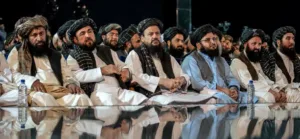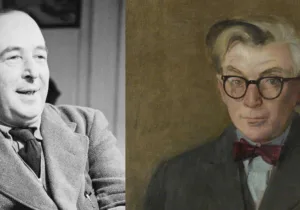Review of Benjamin Wetzel’s American Crusade: Christianity, Warfare, and National Identity, 1860-1920
In the weeks preceding the start of the Iraq War, statements poured in from Christian denominations on the impending conflict. Regional church leaders from the United Church of Christ (UCC) declared that resorting to war, “according to our Christian tradition, is an admission of human failure.” Others, such as American Baptist Churches USA and the presiding bishop of the Episcopal Church, urged President Bush to work toward a resolution through the United Nations. A few years later, the UCC issued a sharp rebuke of US policy, calling “for an end to this war, an end to our reliance on violence as the first, rather than the last resort, an end to the arrogant unilateralism of preemptive war.”
Contrast that with the decidedly more bellicose position of Congregationalist theologian and pastor Lyman Abbott on the eve of the Spanish-American War. “It is…a Christian duty to accept the sword Excalibur, when divine providence puts it into our hands,” Abbott declared. Rev. Frank Bristol of Washington’s Metropolitan Methodist Episcopal Church echoed this with a stark biblical justification for the war: “Were the guns of Dewey and Sampson less providential than the ram’s horns of Joshua, the lamps and pitchers of Gideon, or the rod of Moses?”
Benjamin Wetzel’s American Crusade: Christianity, Warfare, and National Identity, 1860-1920 is replete with excerpts from jingoistic sermons and essays by leading white mainline Protestant spokesmen in the period encompassing the Civil War, Spanish-American War, and World War I. The book explores the underlying principles that guided ardent pro-war sentiment among these spokesmen, while also highlighting dissenting voices from other faiths on the margins of American society.
The book is divided into three sections, one each for the aforementioned conflicts. Each section is dialogical, contrasting the predominant white mainline Protestant sentiment (which was almost invariably pro-war) with voices from “counterpoint groups” (e.g,. Black Methodists, Catholics, and Missouri Synod Lutherans) who were more circumspect, if not in some cases outright opposed, to one or more of these conflicts.
In Wetzel’s account, two “ideological commitments” of white (often northeastern) mainline Protestant spokesmen stand out: American Providentialism (“the view that God uniquely blessed the United States”) and democratic Christian republicanism (“the view that Protestant theology and political liberty were inherently intertwined”).
From the providential perspective, America, by virtue of its commitment to freedom, served as God’s instrument. As Abbott wrote just prior to the Civil War, “America will remain in God’s service, an exponent of individual freedom, or it will go over to Satan’s, and relapse into oligarchy and thence into monarchy.” He was confident that God’s guiding hand would secure victory for the Union. Reflecting this sentiment, another preacher, Henry Ward Beecher, asserted at the height of the war that “the God of justice is the God of battles,” leading the Union forces to victory. Just a few decades later, soon after the start of the conflict with Spain, Abbott claimed that America was God’s chosen people, more favored than the Israelites in the Old Testament. Providentialism reached its apex during World War I, with white mainline Protestant spokesman going so far as to frame the conflict as a holy war in which US soldiers assumed Christ-like status, innocently suffering and sacrificing their lives for the sins of the world.
Democratic Christian republicanism implied that Protestantism was a necessary precondition for a republican form of government. The Reformation, Abbott noted, preceded political revolutions in England and America, and thus it could be said to have opened the door to greater political freedom. Adherence to democratic Christian republicanism allowed mainline spokesmen to draw sharp lines between friend and foe: The North was committed to freedom, suggesting its faith was more genuine, while, to quote Beecher, the South was a “Babylon” marked by “the spirit of aristocratic oppression.” According to Wetzel, this principle “elevated the stakes” of conflicts to civilizational and theological levels: The Spanish-American war became a contest between a free, righteous America built on Anglo-Saxon religious and political traditions and a Spanish tyranny tarnished further by Catholic repression. The Confederacy, Spain, and Germany were demonized as “devilish” opponents of free, Christian nations.
Beyond ideological commitments, Wetzel emphasizes the importance of social position in shaping how a church approached the three conflicts discussed in the book. Indeed, following Wetzel’s analysis, ideological commitments seem almost epiphenomenal to social position.
Social position plays at least three important roles: First, the predominant, most culturally influential faith – in this case, white mainline Protestantism – tends to identify itself with the interests of the state, often merging categories of church and state. Second, marginalized groups are more likely to be characterized in whole or in part by dissent, rejecting assumptions that underly principles like providentialism, such as the unmitigated righteousness of the state. Third, marginalized groups may also see wars as an opportunity to go mainstream and bolster their cultural influence.
Wetzel argues that white mainline Protestant spokesmen often adhered to an ethnocentric worldview that privileged Anglo-Saxons, and they tended to identify themselves as uniquely positioned guardians of the nation’s heritage. As their cultural influence had begun waning by World War I, white mainline spokesmen resorted with greater ferocity to a crusading mindset to bolster their influence.
After World War I, however, white mainline Protestantism turned in a different, more cautious direction when it came to war and national identity. They rejected the excesses of the holy-war mindset that reached its zenith during World War I. The decline of white mainline Protestant influence in American culture and a move away from viewing America as unquestioningly righteous also fostered greater moderation.
Others were in a less privileged position. Black Methodists, Catholics, and Missouri Synod Lutherans were typically at the margins of American society in this period. This, in turn, enabled them to reflect on America and comment on its wars with more “critical distance.” They were less willing to accept America’s supposed righteousness without question. This is not to say that marginalization was the sole reason these groups tended to foster dissenting voices. Wetzel points to the “two-kingdoms” theology of the Missouri Synod Lutherans as a key element of many members’ resistance to intermingling church and state. Still, social position was influential.
The Catholic case sheds light on the other way in which marginalization could affect how a group approached war and national identity. After the start of the Spanish-American War, the Catholic hierarchy tended toward an enthusiastic embrace of the conflict. Wetzel notes that this was not necessarily to be expected. Catholics remained a marginalized group whose loyalty to the United States was questioned. Indeed, as Wetzel highlights, the latter half of the 19th century witnessed myriad anti-Catholic efforts and episodes, ranging from a Republican characterization of the Democrats as the party of “Rum, Romanism, and Rebellion” to the establishment of the American Protective Association.
The Spanish-American War presented an opportunity for Catholic leaders to advance the process of Americanization and demonstrate Catholics’ loyalty to the United States. One could even find American providentialism within the orations of Catholic priests and bishops. Archbishop John Ireland, for example, claimed the war had a “providential purpose” and compared it to the medieval Crusades. In adopting rhetoric like this, American Catholics revealed they were accepting key assumptions espoused by leading Protestant voices at the time.
This was not without resistance. Indeed, the impact of social position could be seen within a single faith wrestling with a conflict. While prowar Catholic leaders like Ireland possessed some political and cultural influence, antiwar Catholics tended to be of a lower social status. They remained critical outsiders willing to castigate American sins, from slavery to the abuse of Native Americans. They thus rejected any sort of providentialism and refused to see the war as grounded in any sacred warrant.
Wetzel’s book is modest in that he is primarily trying to fill in gaps in historical literature, in particular by shedding a light on a historical continuity from the Civil War through World War I, namely, the role of influential white mainline Protestants in promoting pro-war sentiment. Moreover, he seeks to amplify the voices of Christian dissenters who opposed the predominant mainline perspective on these conflicts. Apart from some brief reflections, he largely stays away from drawing out implications and lessons for today.
Evidently, Wetzel is sympathetic to the marginalized dissenters of the past, arguing in the concluding paragraph for the need to hear from those voices that “remain humble in the face of national success, and maintain an ability to separate church and state.”
Putting Wetzel’s own apparent preference aside, the book presents worthwhile food for thought to ponder the relationship between the city of God and the city of man. The conduct of foreign policy and consideration of the prospect of war require nuance and Christians have a role to play offering a moral witness that eschews merely resorting to Manichean battle cries. On the other hand, there is a need for realism, not just an idealistic commitment to peace in a fallen world.







 Live in the DC area? Sign-up for Providence's in-person events list!
Live in the DC area? Sign-up for Providence's in-person events list!